Keeping Knowledge Fresh: Student Solutions for Continuously Relevant Civic Platforms
Student Projects
In the fall of 2024, students from the UX Design and ‘Het Internet is Stuk, maar we gaan het repareren’ minors at Amsterdam University of Applied Sciences tackled a persistent challenges in civic digital communication: how to create platforms where information remains both accessible and up-to-date for users with vastly different knowledge levels.
The Challenge: A Continuously Relevant Platform
Micky van Zeijl
As part of the broader PubHubs redesign project, students focused on the subtheme “A Continuously Relevant Platform” – exploring how shared information can remain accessible and up-to-date while serving diverse user needs. The challenge was clear: Users have different needs; some already know a lot, others are just getting acquainted with a topic. Beginner questions are sometimes asked again every week. How can shared information be preserved so that it’s easily searchable but also remains current? How can you meet diverse user needs?
Students focused on three areas: search functions, discussion spaces, and organizing information clearly and used Kenniscloud as their primary case study. This choice proved particularly relevant, as libraries exemplify the challenge of serving both digital newcomers seeking basic information and researchers requiring advanced resources within the same platform.
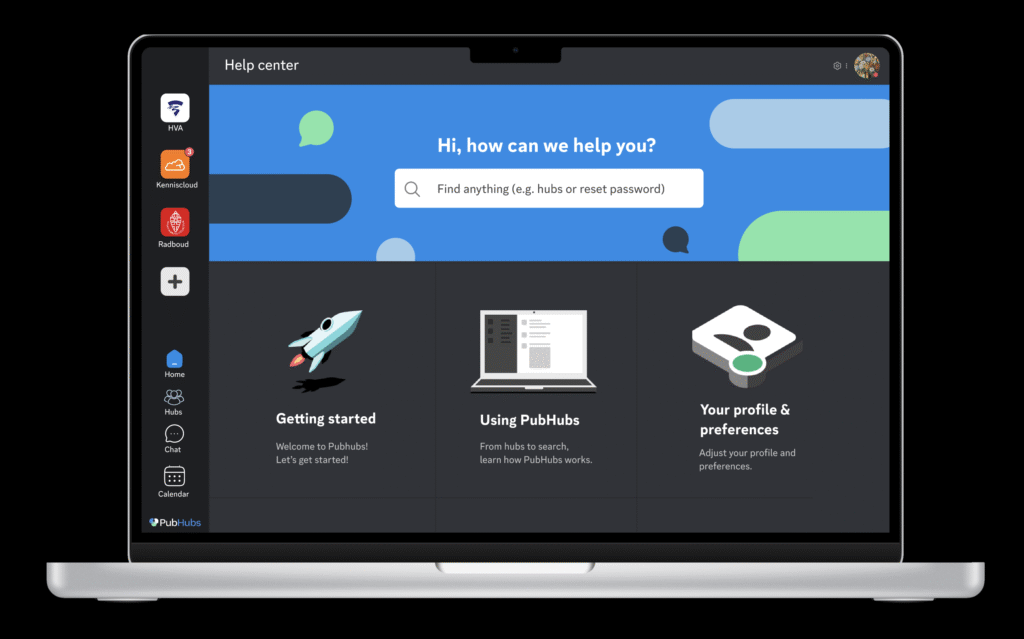
How Students Worked
Students started by looking at how other platforms like Reddit and Discord handle different user types. Then they talked to actual library users – both beginners and experts – to understand what they really needed.
The Kenniscloud context provided students with concrete scenarios: How should a platform handle when the same question about “library events” comes from both a newcomer wanting to attend something fun and an experienced volunteer looking for planning resources? How can crucial information about policy changes remain visible without overwhelming casual users? These real-world constraints shaped their design solutions.
Three Key Insights from Student Work
1. Show Information Step-by-Step
Students discovered that revealing information gradually is essential for civic platforms serving diverse user groups. Rather than overwhelming users with comprehensive information upfront, successful designs provided layered access to complexity.
Step-by-Step Onboarding
One student developed an onboarding process for new PubHubs users that gradually introduced platform features. Starting with simple contact addition, then hub joining, and finally full dashboard access, this approach prevented the intimidation that often drives away newcomers. As the student explained: “We guide users step-by-step rather than showing them everything at once, based on the principle that persuasion is often incremental.”
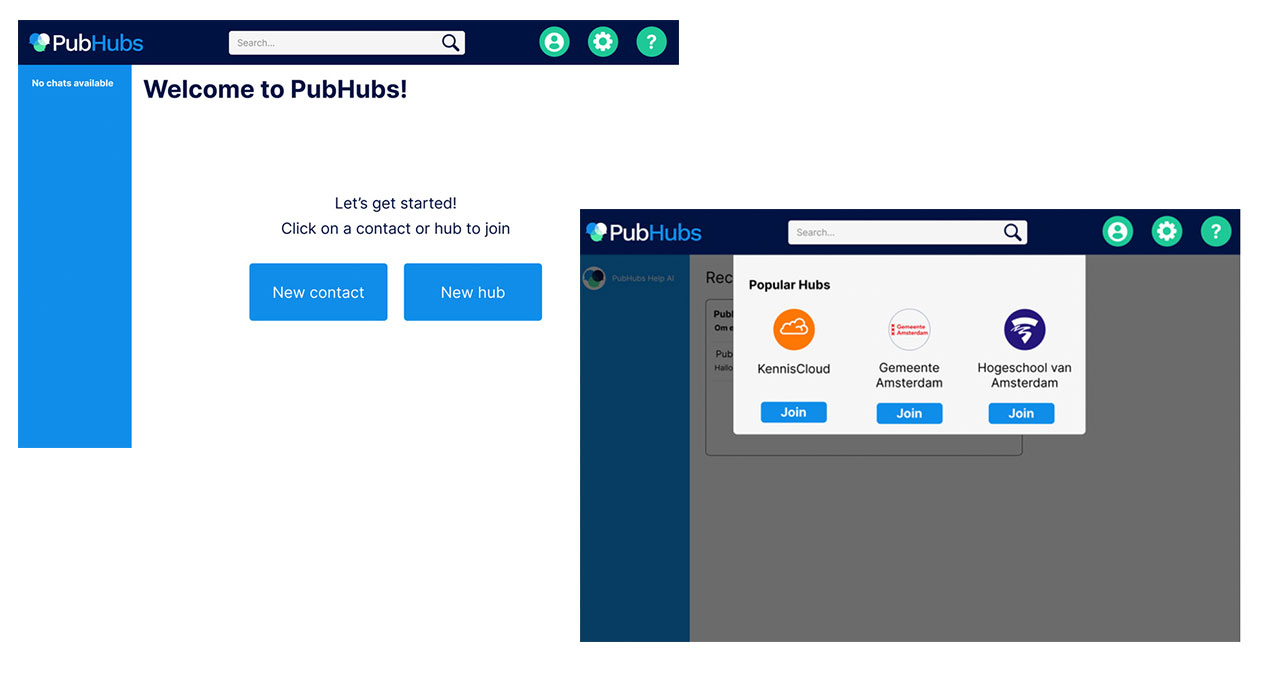
Dropdown Information Architecture Another student created a “Get Started” page with collapsible dropdown sections containing detailed explanations of platform features. This design allowed beginners to explore at their own pace while letting experienced users skip to advanced functionality. The student noted: “Dropdown sections reduce cognitive load by presenting explanations inline, keeping users focused and reducing distractions.”
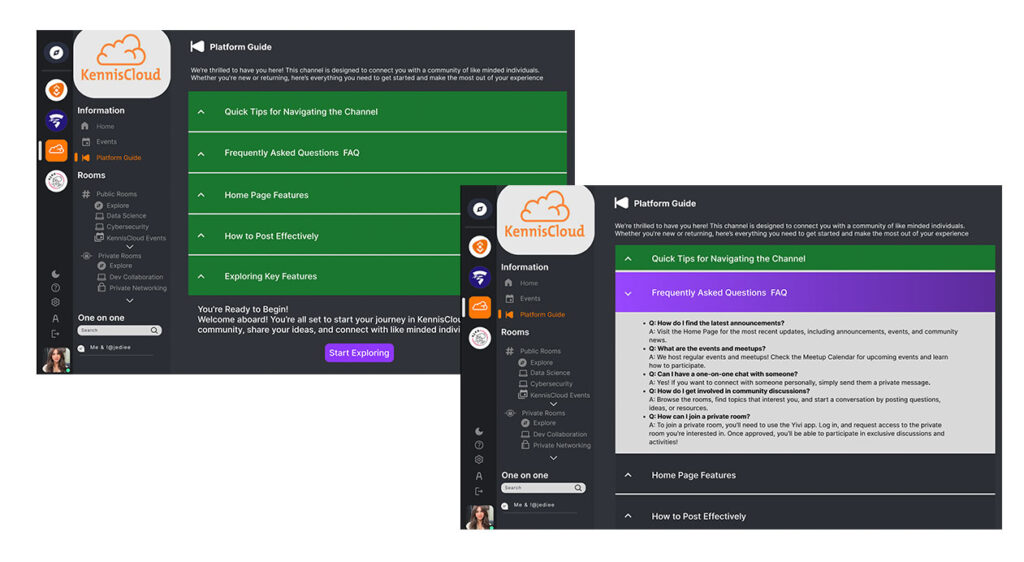
2. Let People Choose Their Level for Each Topic
Students learned that expertise is topic-specific rather than user-specific – the same person might be expert in one area but beginner in another. This insight led to designs that avoided rigid user categories in favor of flexible, context-aware systems.
Level-Based Content Filtering
One student developed a sophisticated search system allowing users to filter content by “beginner” or “advanced” levels within specific topics. A Kenniscloud user could access beginner-friendly information about digital resources while simultaneously engaging with advanced discussions about community programming. The system recognized that expertise varies by context, not user identity.
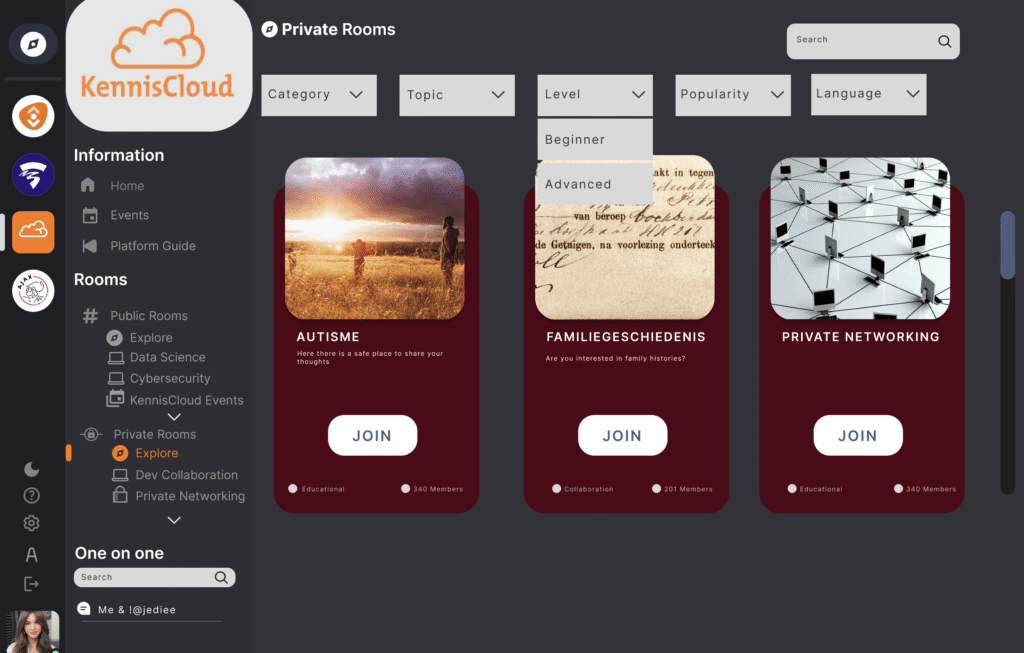
Dynamic User Interface Adaptation
Another student created adaptive home screens that changed based on user engagement patterns. New users saw simplified interfaces with prominent guidance, while experienced users accessed dashboard-style layouts with events, news, and calendar integration. This personalization happened organically through usage patterns rather than forced categorization.
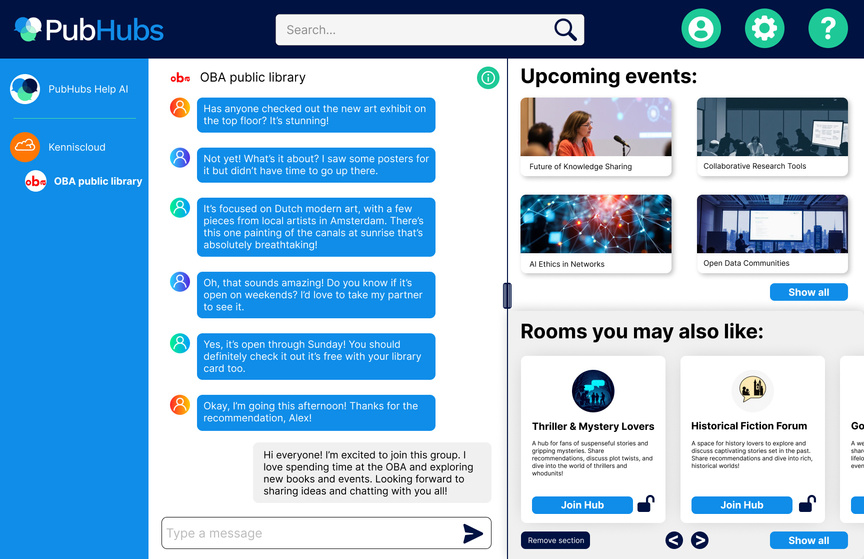
3. Treat Search and Organization as Essential Infrastructure
Across all projects, students discovered that search, filtering, and content organization aren’t just nice-to-have features – they’re the foundation that makes civic platforms actually work. The most successful designs treated these systems as core platform elements requiring ongoing attention and sophisticated design.
Multi-Layered Search Strategy
One student built a search system that could filter by topic, difficulty level, popularity, and language. It also showed trending hashtags like #StudyWithMe and #BestStudyTips, plus pinned important questions that came up frequently. This meant the same search could give appropriate results for different users’ needs.
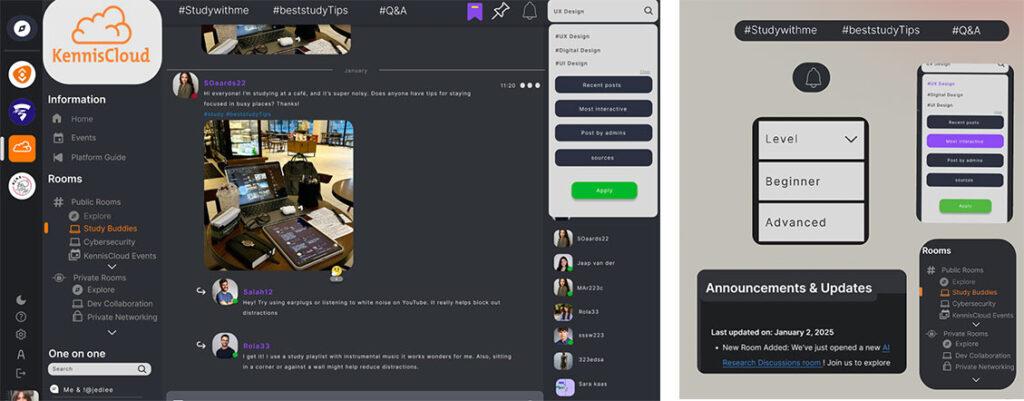
Content Management Tools
The same student created a complete system for managing information over time. Users could save important posts, mark things to read later, see recent updates, and get smart notifications. This treated information as something living that needed active care, making sure important announcements stayed visible while outdated content could be removed.
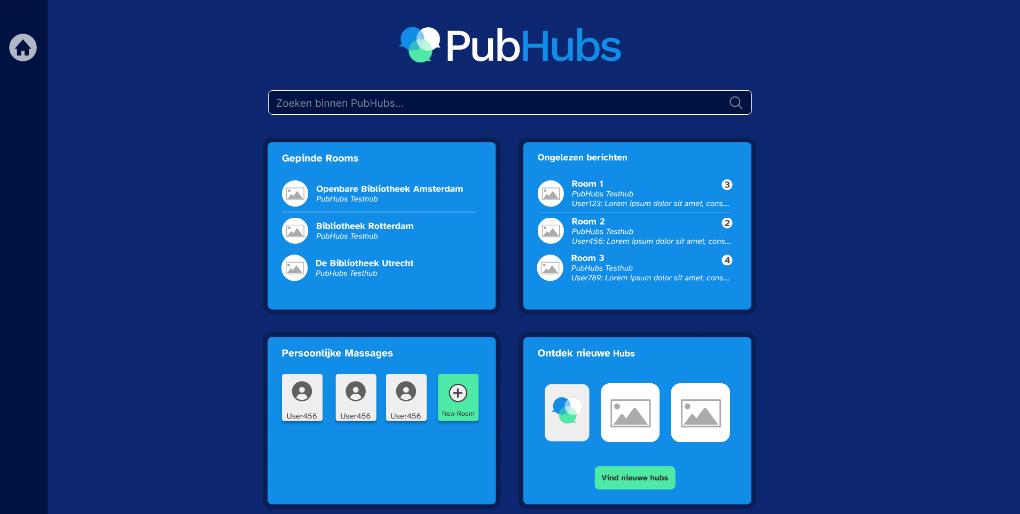
What This Means
The student work proves you can create platforms that work for both beginners and experts. The trick is understanding that people have different knowledge levels for different topics, not putting users into fixed boxes.
Key lessons: reveal information gradually, let people choose their engagement level, and make search really good. These aren’t fancy features – they’re basic requirements for platforms that actually serve diverse communities.
As public organizations rely more on digital platforms, these lessons offer practical ways to keep information useful for everyone.
The student projects show that with careful attention to what users actually need, civic platforms can serve their whole community effectively.